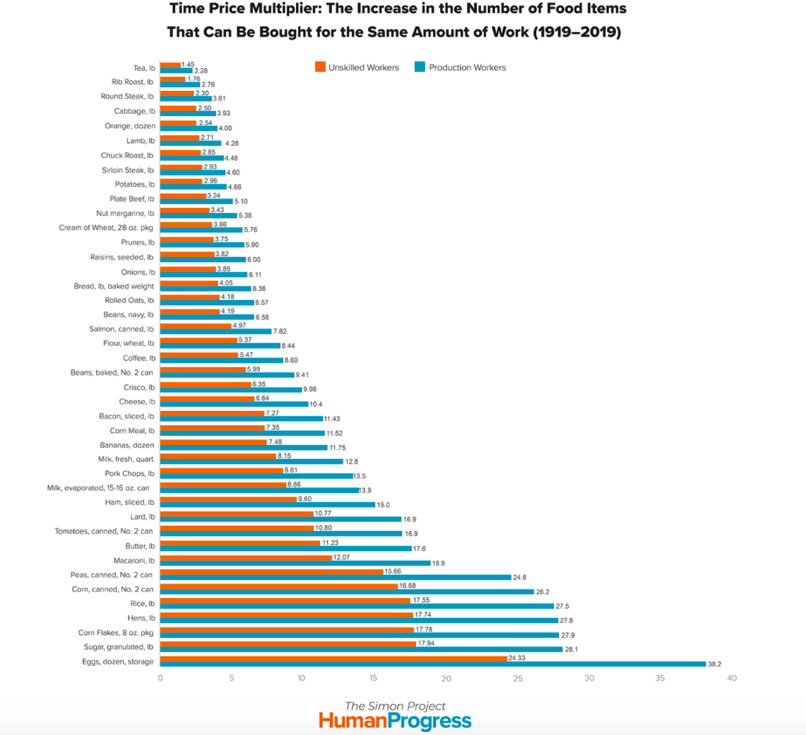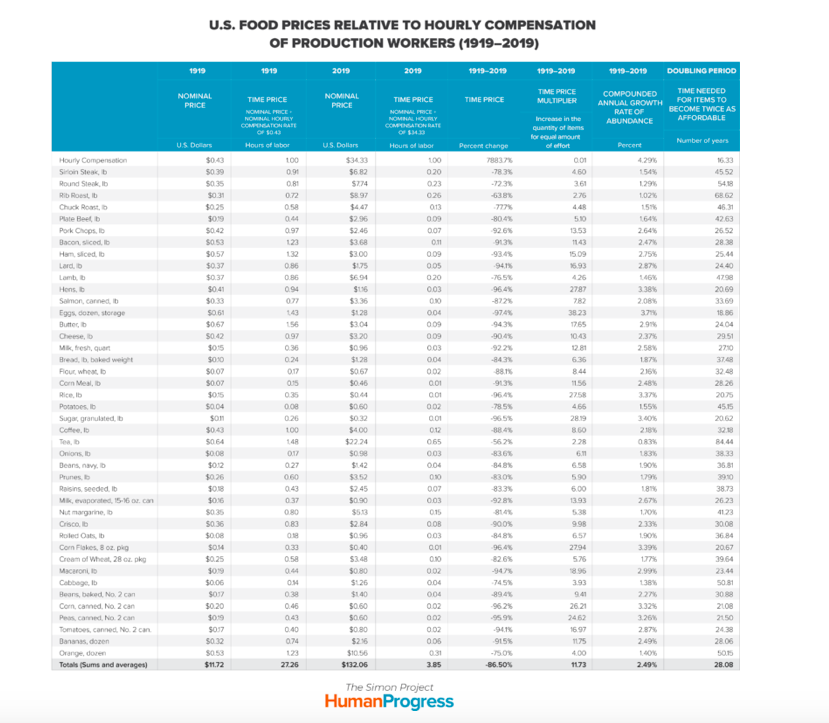Last week, I wrote about the cost of food in the United States between 1919 and 2019. Using historical data, I showed that, on average, basic food items have become much cheaper relative to the wages of unskilled laborers. I focused on unskilled wage earners, because they represent the workers at the bottom of the UD income ladder. Both the right and the left of the political spectrum agree that it is the well-being of the least fortunate that ought to be of the greatest concern to a civilised society.
Today, I wish to turn to the price of food relative to the compensation of production (i.e., blue-collar) workers, including factory workers or machine operators, who are involved in the manufacturing all kinds of goods in such sectors as food and drink processing, light and heavy engineering, etc. That’s because of the widespread belief that the American middle class is being “squeezed,” with life in the United States becoming unaffordable.
Let me start by repeating that cost of living isn’t easy to measure. Most people agree that, as one commentator put it, “financial uncertainty rises from a mortgage, three children, day care costs, and the prospect of college tuition.” But, other things have become cheaper. Together with Gale Pooley, I found that, relative to the compensation of production workers, food was almost 12 times as affordable in 2019 as it was in 1919.
Figure 1 (click to expand)

As in my last article, I started with Retail Prices, 1913 to December 1919: Bulletin of the United States Bureau of Labor Statistics, No. 270. Nominal prices of 42 basic food items as collected by US government officials in Detroit in 1919 can be seen in column two of the first graphic. The 1919 time price of food, which is defined as the nominal price of food relative to the nominal hourly compensation rate of production workers ($0.43), can be seen in column three.
The nominal prices of the same goods (including the same quantity of those goods) as advertised on www.walmart.com in 2019 can be seen in column four. The 2019 time price of food, defined as the nominal price of food relative to the nominal hourly compensation rate of production workers ($34.33), can be seen in column five.
What were the results?
- The time price (i.e. nominal price divided by nominal hourly wage) of our basket of commodities fell from 27.26 hours of work to 3.85 (see the Totals line in column three and five).
- The unweighted average time price fell by 87 percent (see the Totals line in column six).
- Put differently, for the same amount of work that allowed a production worker to purchase one basket of the 42 commodities in 1919, he or she could buy 11.73 baskets in 2019 (see the Totals line in column seven).
- The compounded rate of “affordability” of our basket of commodities rose at 2.49 percent per year (see the Totals line in column eight).
- Put differently, an unskilled labourer saw his or her purchasing power double every 28 years (see the Totals line in column nine).
Figure 2 (click to expand)

Finally, note the first graphic, which compares unskilled and production workers’ food affordability gains. Over the last 100 years, unskilled labourers’ nominal wage rate rose at a slower pace (4,980 per cent) than production workers’ compensation rate (7,884 per cent).
As a consequence, the former group’s food affordability increased at a compounded annual rate of 2.05 percent, while the latter group’s food affordability rose at a compounded rate of 2.49 percent. As such, food has become 54 percent more affordable for production workers than unskilled laborers between 1919 and 2019.
Clearly, skills matter. That said, both groups of workers registered significant gains in terms of food affordability over the last century. These findings ought to be taken into account when discussing the cost of living in the United States.








